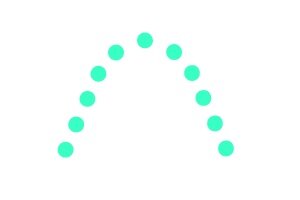So why do so many of us see it as a session bolt-on?
You’ve done it, I’ve done it. You finish 50 minutes of the allocated training hour before thinking “Right, that’s the REAL work done, now I’ll do a few crunches in a futile attempt to finally bag that elusive six pack… Ouch, wait a minute, that's hurting my neck! Hmm, think that’ll do for today.”
Let’s not focus on the choice of exercise here or issues with form. Instead, let’s focus on this - of all the exercises in all the world, those that work your core matter most - for your fitness, for your performance, for your strength and for your general wellbeing.
Your core, that is your abdominal, back and pelvic muscles, is your body’s bedrock. Neglecting it during your workout is the training equivalent of building a house without foundations. What you invest in materials and on decor is inconsequential; a big gust of wind and that beautiful abode will simply erode.
But we wouldn’t dream of being so reckless with our house, right? This is our house after all! Yet surely, on a micro level that’s exactly what your body is - first and foremost it’s the one and only place in which you, alone, will reside for the rest of your life.
Just to prove how integral your core is: quickly raise your left arm above your head and bring it back down (don’t worry, nobody’s looking). Now, do the same thing again but this time do it very, VERY, slowly (yes, now everyone is staring at you like you’ve lost your mind). The second time, you will have felt your abdominal muscles engaging - that’s because, no matter how big or how small the motion, your body is wholly reliant on your core to stabilise and support pretty much every movement you make. The stronger that core is the more fluid, the more balanced and, ultimately, the more efficient that body of yours will be.
Even if you don’t train regularly, working your core is still important. With so many of us having spent the vast majority of our career sat in front of a screen, it’s no wonder that sore backs are an issue. It is, however, staggering that four out of five of us will suffer from problematic back pain over the course of our working lives; particularly when we can alleviate that risk by working our core, even whilst sat at our desks. Simply drawing your belly button towards your back and holding for five breaths once an hour can help to strengthen this area and stop back pain in its tracks.
If you want to step it up a notch, start incorporating a good 15 to 20 minutes of core exercise into your training sessions. Here’s a few great exercises to get you going:
Planks: Lie face down on a mat, resting your weight on your forearms with your elbows under your shoulders with both feet together and forefeet on the floor. Raise the body into a straight line and hold the position for as long as possible. Repeat 2/3 times.
Bridges: Lie on your back with your hands by your side. Bend your knees bent and place your feet flat on the floor. Position yourself so that your knees are under your feet and then raise your hips, aiming to create a straight line from knee to shoulder. Pulse or hold for 20 - 60 seconds and repeat 2/3 times.
Scissor kicks: Lie flat on a bench or mat. Place hands under each buttock to support the pelvis. Keeping legs straight, alternately raise each leg simulating a scissor movement.
Windshield wipers (on floor): Lie on your back on the floor and raise your legs to 90 degrees. Spread your arms straight out to your sides to stabilise then rotate your legs to one side, stopping short of touching the floor before rotating to the other side.
Superman: Lie straight and face down on the floor or exercise mat. Simultaneously raise your arms, legs, and chest off of the floor and hold for 2/3 seconds. Slowly begin to lower your arms, legs and chest back down to the starting position.
Everything else! There really isn’t an exercise in which your core is not required so whether you're squatting, lunging, or deadlifting start embracing and then, well, bracing your core. Only good things will happen!

